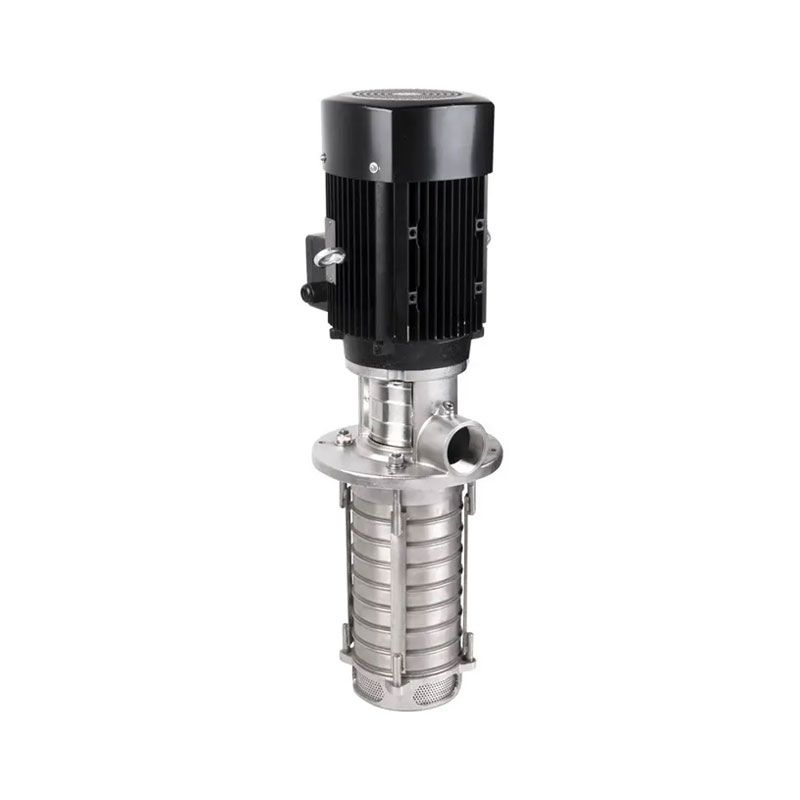Overview of Centrifugal Pumps
2025-09-05
Centrifugal pumps are among the most widely used pump types worldwide. With advantages such as simple structure, stable performance, and ease of maintenance, they play an essential role in municipal water supply, industrial circulation, agriculture, and environmental protection. Below is an outline of their structure, operating principle, and key performance features.

1. Basic Structure
A centrifugal pump is mainly composed of six essential parts: impeller, pump casing, pump shaft, bearing, sealing ring, and stuffing box.
● Impeller
The impeller is the core component, responsible for transferring energy to the liquid. Before installation, it must pass a balance test to ensure smooth operation. A polished surface reduces friction losses and improves efficiency.
● Pump Casing
Often referred to as the pump body, the casing supports the assembly and creates the pressure chamber where fluid is guided and pressurized.
● Pump Shaft
Connected to the motor via a coupling, the shaft transmits torque and drives the impeller.
● Bearings
Bearings support the shaft and reduce friction. Two common types are rolling bearings (using grease lubrication) and sliding bearings (using lubricating oil). Proper lubrication is critical—too little may cause overheating, while too much can lead to leakage and temperature rise.
● Sealing Ring
Also known as the wear ring, this component reduces internal leakage between the impeller and the casing, improving pump efficiency and extending service life.
● Stuffing Box
Made up of packing, gland, and sealing water arrangement, the stuffing box prevents leakage and air ingress while maintaining stable pump operation. During long-term service, the packing requires periodic inspection and replacement.
2. Flow-Through Components and Impeller Types
The liquid passes through three sections: suction chamber, impeller, and discharge chamber.
According to design, impellers can be classified as:
● By flow direction: radial, mixed-flow, and axial-flow.
● By suction type: single-suction and double-suction.
● By structure: closed, semi-open, and open impellers.
3. Operating Principle
Centrifugal pumps operate based on centrifugal force. Before startup, the casing and suction pipe must be primed with liquid. When the impeller rotates at high speed, liquid is pushed outward under centrifugal action, creating a low-pressure zone at the impeller center. This vacuum draws liquid continuously from the source, ensuring steady pumping.
If operated without priming, cavitation may occur, leading to vibration, reduced capacity, or even equipment damage.
4. Performance Curves
The performance of a centrifugal pump is defined by the relationship between flow rate (Q), head (H), shaft power (N), speed (n), and efficiency (η). The three most important curves are:
1.Q-H Curve (Flow vs. Head): As flow increases, head decreases.
2.Q-N Curve (Flow vs. Power): Power consumption increases as flow rises.
3.Q-η Curve (Flow vs. Efficiency): Efficiency peaks at an optimal flow range, known as the high-efficiency zone.
5. Reliable Configuration and Safe Operation
Selecting the right pump and motor combination is crucial for energy savings, stable operation, and cost control. Proper configuration and regular maintenance ensure long-term reliability, high-quality water supply, and reduced operating costs.
Conclusion
As a fundamental product in the water pump industry, centrifugal pumps remain indispensable in modern fluid transport systems. With years of experience in pump design and manufacturing, Crowns Pump continues to improve impeller design, sealing technology, and overall efficiency—delivering reliable, durable, and energy-efficient centrifugal pump solutions tailored to diverse applications.




